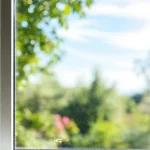Essential Steps to Create a Wildlife-Friendly UK Garden
Making your garden wildlife friendly in the UK begins with understanding the core needs of local animals. A safe garden for wildlife must provide four essentials: food, water, shelter, and safe passages. These create a balanced environment where species can thrive throughout the year.
Start by assessing your space and its natural features. Introduce native plants known for supporting garden habitat creation; these species attract insects, birds, and mammals vital to biodiversity. Next, incorporate varied vegetation to offer year-round food sources like berries, nectar, and seeds. Water is crucial—install birdbaths or small ponds to aid drinking and bathing. Ensure water sources are shallow and accessible to reduce risks. Lastly, craft secure shelters and connected green corridors to protect wildlife from predators and hazards.
Topic to read : Elevate your city life: easy tips for balcony gardening
By following these key principles and gradually changing your garden, you improve its value as a wildlife garden UK residents can be proud of. This strategic approach enhances habitat quality while maintaining a pleasant and sustainable garden space for people and nature alike.
Choosing the Right Plants and Native Species
Selecting native UK plants is crucial for successful garden habitat creation. These species have evolved alongside local wildlife, offering trusted food and shelter. Choose plants that bloom at different times to ensure year-round nourishment for birds, insects, and mammals in your wildlife garden UK. For example, honeysuckle and dog rose provide nectar for pollinators early in the year, while ivy and holly offer berries in autumn and winter.
Additional reading : How can I create a themed garden in a UK home setting?
Planting in layers mimics natural habitats, combining ground cover, shrubs, and trees. This layering supports diverse species and creates microhabitats, making your garden safe and attractive to wildlife. For instance, low-growing native wildflowers attract beetles, while thicker bushes serve as shelter for small mammals.
Focusing on wildlife-friendly planting also means avoiding invasive species that disrupt biodiversity. Opt for native flora to boost UK garden biodiversity and support essential pollinators like bees and butterflies. These plants not only sustain wildlife but also enhance the beauty and ecological balance of your space, making your efforts in making a garden wildlife friendly more impactful.
Essential Steps to Create a Wildlife-Friendly UK Garden
Creating a wildlife garden UK residents can enjoy starts with meeting four key needs: food, water, shelter, and safe passages. These essentials form the backbone of making garden wildlife friendly by supporting diverse species and providing a safe garden for wildlife year-round.
Begin by offering varied food sources such as native berries, seeds, and nectar to attract birds, mammals, and pollinators. Water provision is equally vital; shallow baths or ponds supply drinking and bathing spots while reducing risks. Shelter is the third pillar—dense shrubs, log piles, and purpose-built refuges give animals protection from predators and harsh weather.
Finally, think about safe passages. Creating connected green spaces or hedgerows allows animals to move freely while avoiding roads and urban dangers. Combining these steps achieves effective garden habitat creation.
With consistent care, these measures enhance biodiversity while blending naturally into your garden’s design. This approach not only attracts wildlife but fosters a thriving, balanced ecosystem that benefits humans and nature alike.
Essential Steps to Create a Wildlife-Friendly UK Garden
Creating a wildlife garden UK residents can enjoy requires focusing on four essentials: food, water, shelter, and safe passages. These form the foundation of making garden wildlife friendly and effective garden habitat creation. Start by providing a variety of native food sources like berries, seeds, and nectar to support birds, mammals, and pollinators throughout the year.
Water is equally vital; shallow birdbaths or small ponds offer drinking and bathing spots while minimizing dangers such as drowning. Next, ensure ample shelter by including dense shrubs, log piles, and purpose-built refuges to protect animals from predators and harsh weather. Finally, design safe garden for wildlife corridors that connect different green spaces. These passages allow animals to roam safely, avoiding hazards like roads.
Following these steps methodically transforms a garden into a thriving wildlife habitat. This balanced approach supports biodiversity and brings nature closer to home, ensuring your wildlife garden UK is both inviting and secure for native species. Consistent care and thoughtful planning are key to enhancing your garden’s ecological value while maintaining its beauty.
Essential Steps to Create a Wildlife-Friendly UK Garden
Creating a wildlife garden UK residents value begins with four essential elements: food, water, shelter, and safe passages. These foundational needs guide making garden wildlife friendly and effective garden habitat creation. Start by planting diverse native species that provide year-round food sources such as berries, seeds, and nectar. This variety supports birds, mammals, and pollinators throughout changing seasons.
Water must be accessible and safe. Install shallow birdbaths, small ponds, or water features designed to prevent drowning and contamination. These provide drinking and bathing spots crucial for wildlife health.
Shelter protects animals from predators and harsh weather. Use dense shrubs, log piles, and purpose-built refuges like bird boxes or hedgehog houses. Placement is key: position shelters away from busy human activity and close to food and water sources.
Finally, establish connected green corridors or hedgerows to create a safe garden for wildlife. These passages enable animals to move freely between habitats without encountering roads or urban dangers.
Following these key steps transforms your garden into a thriving ecosystem, promoting biodiversity while enhancing its natural beauty and usability. Consistent care ensures long-term success in making garden wildlife friendly.
Essential Steps to Create a Wildlife-Friendly UK Garden
Creating a wildlife garden UK residents can rely on involves meeting four vital needs: food, water, shelter, and safe passages. These essentials form the core of making garden wildlife friendly and effective garden habitat creation. Begin by planting a variety of native and seasonal species that provide consistent food sources like seeds, berries, and nectar. This diversity supports birds, mammals, and pollinators year-round.
Water provision is equally crucial. Install shallow birdbaths or small ponds designed carefully to prevent risks such as drowning and contamination. These water sources offer hydration and bathing opportunities vital for wildlife health and activity.
For shelter, incorporate dense shrubs, log piles, or purpose-built refuges such as bird boxes and hedgehog houses. Position shelters away from heavy human traffic but close to food and water, enhancing security and usability.
Lastly, design green corridors or connected hedgerows to create a safe garden for wildlife. These passages allow free movement between habitats, minimizing dangers from roads and urban areas. Following these key steps establishes a flourishing garden ecosystem that nurtures biodiversity and invites wildlife to thrive naturally.
Essential Steps to Create a Wildlife-Friendly UK Garden
Creating a wildlife garden UK residents can trust requires a focused approach on four essentials: food, water, shelter, and safe passages. Begin with choosing diverse native plants that supply year-round food sources like nectar, berries, and seeds. This foundation supports birds, mammals, and pollinators, vital to enriching garden habitat creation.
Water provisioning is equally important. Simple features such as shallow birdbaths or secure ponds offer drinking and bathing areas while preventing dangers like drowning or contamination. Ensuring water is accessible throughout the seasons boosts habitat usability.
Shelter provides safety from predators and harsh weather. Incorporate dense shrubs, log piles, and dedicated refuges like bird boxes or hedgehog houses. Position these strategically — away from heavy foot traffic and close to both food and water sources — to optimize use and security.
Finally, the design of your garden should consider safe passages. Connected hedgerows or green corridors allow wildlife to move freely, reducing risks from roads and urban threats. By integrating these key steps, you advance making garden wildlife friendly into a safe garden for wildlife that fosters biodiversity and natural balance.
Essential Steps to Create a Wildlife-Friendly UK Garden
Creating a wildlife garden UK residents cherish means focusing on four vital components: food, water, shelter, and safe passages. These pillars are central to making garden wildlife friendly and achieving successful garden habitat creation.
Start by planting varied native species that offer a continuous supply of food – such as nectar, seeds, and berries – supporting birds, pollinators, and mammals throughout the year. Water sources should be safe and accessible; shallow birdbaths or ponds provide drinking and bathing spots while minimizing risks like drowning or contamination.
Shelters are essential for protection. Incorporate dense shrubs, log piles, and purpose-built refuges like bird boxes or hedgehog houses. Placing these close to food and water but away from heavy human activity ensures they serve as secure homes.
Equally important is establishing connected green corridors or hedgerows. These create a safe garden for wildlife by enabling animals to move safely between habitats, avoiding dangers such as roads and urban obstacles.
By systematically applying these steps, you transform any garden into a thriving, biodiverse space that supports UK wildlife naturally and effectively.










